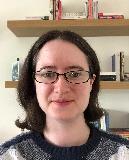Gemma Evans is a Post-Doctoral Research Assistant on the National AI-Enabled Repository for Wales Project and attended IS&T Archiving 2022 on behalf of DPC member Aberystwyth University with support from the DPC’s Career Development Fund, which is funded by DPC Supporters.
The DPC Career Development Fund grant provided me with the opportunity to attend the recent Society for Imaging Science and Technology (IS&T) Archiving 2022 conference which took place virtually from 7-10 June 2022.[i] The theme of the conference was ‘State-of-the-art Imaging, Digitization, Preservation, and Access’ and included a wide range of panels covering themes such as computational analysis, art and imaging, visualisation, and new advancements in digitisation. The conference also offered the opportunity to view behind the scenes tours of imaging labs and cultural heritage institutions.
The papers relating to computational analysis and Artificial Intelligence (AI) were particularly relevant to my work on a project currently being led by Aberystwyth University which aims to deliver a prototype for a National AI-Enabled Digital Repository for Wales.[ii] Our project, which is being carried out together with partners across the cultural heritage, data management and digital preservation sectors, is addressing challenges in relation to search and discoverability for digital collections which were also reflected in the sessions I attended.[1] These included insights into the uses of technologies such as Optical Character Recognition (OCR), enhanced computer vision, and the training of facial recognition models to link images of individuals across a digital image collection, as well as how deep learning models can be used to enhance metadata across a range of digital resources.
Despite the many advances in the use of computational methods to enhance digital collections, however, there remains a question over how the decisions made via AI can be understood by users. The perceived obscurity of a “black box” whose inner workings and reasoning are unknown to us is perhaps one the greatest barriers to the successful adoption of AI tools both within the digital preservation sector and beyond. Consequently, part of our project aims to address the extent to which our AI-enabled prototype can deliver meaningful information about the reasons for which it has produced particular results. Instructive to this challenge is the concept of paradata which was presented to the conference by Jeremy Davet on behalf of the InterPARES Trust AI project in his paper ‘Tracking the Functions of AI as Paradata and Pursuing Archival Accountability’. [iii] The term, defined as ‘information about the procedures and tools used to create and process information resources’, has been suggested as a way to both identify and present data to users about how machine learning tools are trained and developed, as well as the results they reach in any given case. The speaker noted challenges in relation to defining the concept precisely, and the InterPARES project aims to identify the specific ways in which algorithms can best be interpreted for human understanding, but it also highlighted the considerable importance for paradata to support the more traditional ethical underpinnings of archival practice, including transparency, accountability, and the integrity of the record.
Beyond the relevance of the conference to our current project, however, the papers I attended offered guidance in relation to imaging and digitisation that will be helpful to me throughout my future archival career. These included in-depth demonstrations in the visualisation panel of how to obtain images of rare and early books whose narrow openings impede photographic capture, the use of reflectance transformation imaging (RTI) to provide enhanced images, and a 3D model viewer adapted for use in a cultural heritage context from software used in video game development.
In addition, the Career Development Fund enabled me to attend a short course titled ‘Designing and Implementing a Digital Preservation Workflow’. The course was led by Dinah Handel, digitisation service manager at Stanford University Libraries, and covered a range of management skills including project planning and monitoring, role assignment, budgeting, and the software tools that can be used to implement digitisation workflows. Despite my familiarity with a range of software for Agile project management gained in my previous work in online content production, I was pleasantly surprised to learn that digitisation-specific tools such as Goobi have been developed which cater specifically to digital collections tasks.[iv] The course covered a lot of ground over the space of only two hours and provided guidance and sample project management documentation that will be extremely useful to me in any future project work.
Overall, the IS&T Archiving 2022 conference provided an opportunity to learn about both emerging concepts and practices in the fields of imaging and digitisation, as well as detailed guidance and project-specific skills presented from a range of cultural heritage and digital preservation perspectives. I am very grateful to the DPC for the opportunity provided by the Career Development Fund to attend this year’s conference, and would encourage everybody interested in leading-edge digitisation technologies to attend the conference in the future.
[1] The project is funded by the AHRC Infrastructure for Digital Innovation and Curation in Arts and Humanities (iDAH) programme and our project partners and supporters include: The National Library of Wales, Royal Commission on the Ancient and Historic Monuments of Wales, Archives and Records Council Wales, Bangor University, Cadw, Canolfan Bedwyr, Cardiff Metropolitan University, Cardiff University, Dictionary of the Welsh Language/Geiriadur Prifysgol Cymru, Digital Preservation Coalition, Eisteddfod Genedlaethol Cyrmu, Open University in Wales, Swansea University, the University of South Wales, Wales Higher Education Libraries Forum (WHELF), and Welsh Government.
Website references:
[i] https://www.imaging.org/Site/IST/Conferences/Archiving/Archiving_Home.aspx?WebsiteKey=6d978a6f-475d-46cc-bcf2-7a9e3d5f8f82&Entry_CCO=2#Entry_CCO
[ii] https://gtr.ukri.org/projects?ref=AH%2FW007487%2F1
[iii] https://interparestrustai.org/
[iv] https://www.intranda.com/en/digiverso/goobi/goobi-overview/
































































































































Read more...